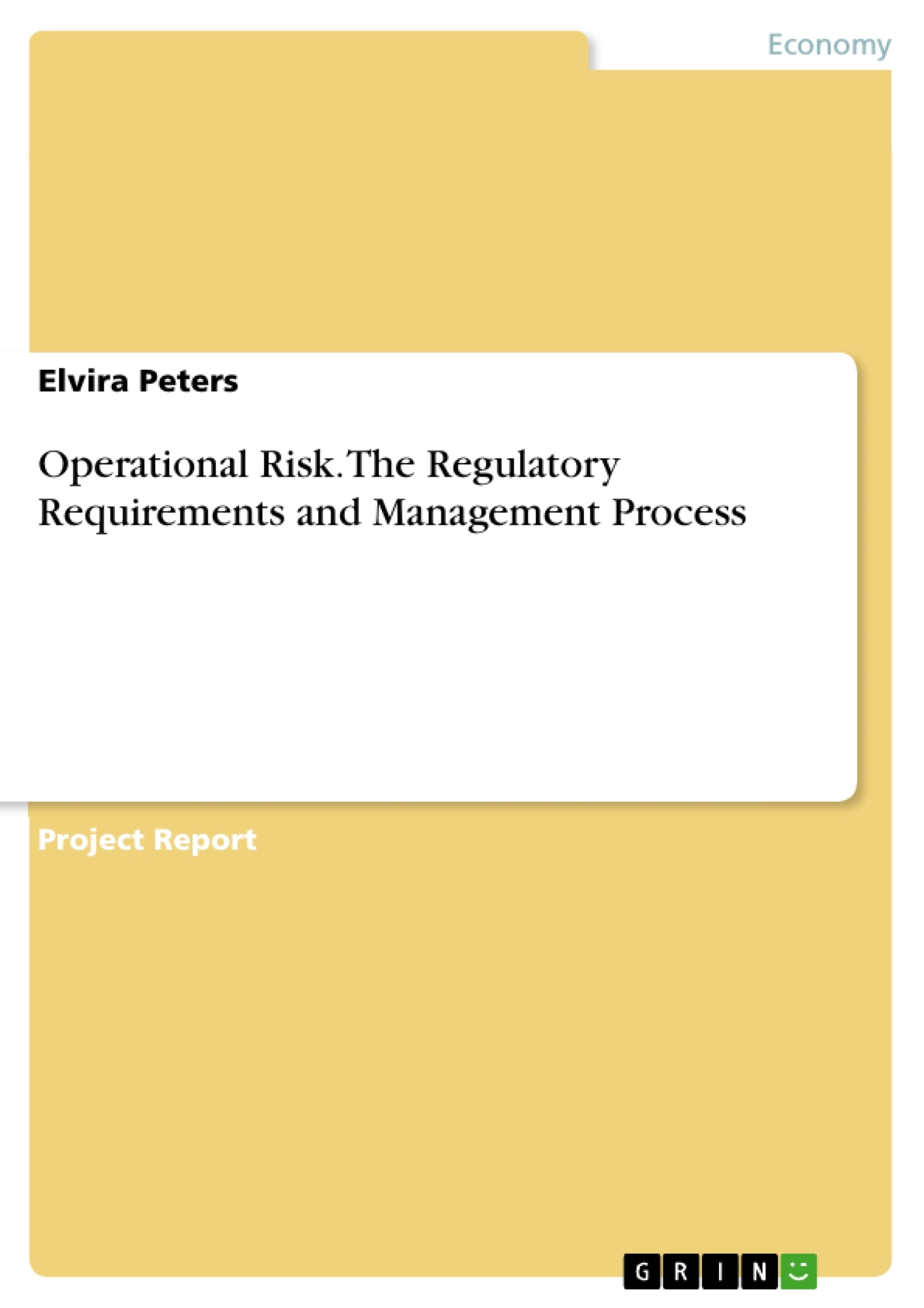During the last twenty years operational risk has gained in importance in the financial sector. Although this type of risk is definitely not new but rather one of the oldest, it has remained unconsidered for a relatively long time. However operational risks have always existed and do exist in the daily business ever since the foundation of every financial institution.
Considering the increased complexity and global developments in the financial system as well as the recent extremely large losses caused by operational risk, this risk type has finally acquired a greater relevance. One of the most popular examples for the tremendous losses caused by operational risk is the collapse of the Barings Bank in the year 1995 due to an inadequate control system and serious failures in management and supervisory.
Unlike other types of risks operational risks are very heterogeneous and diversified. The term includes a variety of meanings and range from employee errors, systems’ failures and frauds up to external events, such as fire or floods. Therefore the former definition of operational risk was a negative one, which stated what the term is not – e.g. credit, market or liquidity risk – it was the “other risks” basket (Utz 2006: 52). But this definition has proven to be “opaque and less than useful” (Carol 2003: 104) and is now obsolete.
Since a consistent definition is absolutely necessary for a general framework for managing and controlling operational risks, the Basel Committee provided a more precise definition. It defines the operational risk as: “the risk of direct or indirect loss resulting from inadequate or failed internal processes, people and systems or from external events” (BCBS 2001: 2). This definition includes also the legal risk, but not the reputation risk and strategic risk. A lot of industry representatives applied this definition, hence it can now be assumed as the standard one.
According to this definition, the operational risk can be divided into two main streams of risk: the external and the internal risk: The internal risk arises inside the institution, whereas the external risk arises outside the institution.
Inhaltsverzeichnis (Table of Contents)
- 1. Introduction and Definition
- 2. Important Regulatory Requirements of Operational Risk
- 2.1 The Basel Capital Accord
- 2.1.1 The First Pillar: Minimum Capital Requirements
- 2.1.2 The Second Pillar: Supervisory Review Process
- 2.1.3 The Third Pillar: Market Discipline
- 2.2 Sound Practices
- 2.3 The National Implementation of Basel II in Germany
- 3. The Operational Risk Management Process
- 3.1 Risk Identification
- 3.2 Risk Assessment
- 3.3 Reporting
- 3.4 Management of operational risks
- 3.4 Monitoring
Zielsetzung und Themenschwerpunkte (Objectives and Key Themes)
This student paper examines the concept of operational risk within the financial sector, focusing on its increasing importance and the regulatory framework established by the Basel Committee on Banking Supervision (BCBS). The paper aims to provide a comprehensive understanding of operational risk, its characteristics, and the key regulatory requirements that govern its management.
- The significance and evolution of operational risk in financial institutions.
- The Basel Capital Accord (Basel II) and its impact on operational risk management.
- Key regulatory requirements for operational risk, including the three pillars of Basel II.
- The operational risk management process, including risk identification, assessment, reporting, and management.
- The national implementation of Basel II in Germany.
Zusammenfassung der Kapitel (Chapter Summaries)
Chapter 1, "Introduction and Definition," explores the concept of operational risk, its historical context, and its increasing relevance in the financial sector. The chapter examines the evolution of the definition of operational risk, highlighting the importance of a clear and consistent framework for its management. It also delves into the different risk factors associated with operational risk, including internal and external factors such as people, systems, processes, and external events.
Chapter 2, "Important Regulatory Requirements of Operational Risk," focuses on the Basel Capital Accord (Basel II) and its role in shaping regulatory requirements for operational risk management. The chapter discusses the three pillars of Basel II—minimum capital requirements, supervisory review process, and market discipline—and their implications for operational risk management. It also examines the national implementation of Basel II in Germany and its impact on financial institutions operating in the country.
Chapter 3, "The Operational Risk Management Process," outlines the key steps involved in effectively managing operational risks. It examines risk identification, assessment, reporting, and management processes, providing insights into how financial institutions can proactively address potential operational risks. The chapter also discusses the importance of monitoring operational risks to ensure ongoing effectiveness of risk management strategies.
Schlüsselwörter (Keywords)
This paper focuses on operational risk, Basel Capital Accord (Basel II), regulatory requirements, risk management, risk identification, risk assessment, reporting, management, monitoring, financial institutions, banking sector, and national implementation.
- Quote paper
- Elvira Peters (Author), 2015, Operational Risk. The Regulatory Requirements and Management Process, Munich, GRIN Verlag, https://www.grin.com/document/324197




